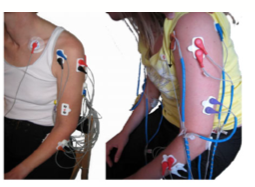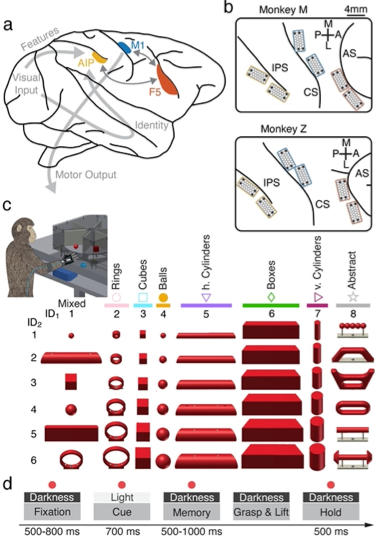Objective: Stroke is a leading cause of long-term motor disability. Stroke patients with severe hand weakness do not profit from rehabilitative treatments. Recently, brain-controlled robotics and sequential functional electrical stimulation allowed some improvement. However, for such therapies to succeed, it is required to decode patients’ intentions for different arm movements. Here, we evaluated whether residual … Read More “Decoding upper limb residual muscle activity in severe chronic stroke” »
Tag: journalClub
One of the primary ways we interact with the world is using our hands. In macaques, the circuitspanning the anterior intraparietal area, the hand area of the ventral premotor cortex, and the primarymotor cortex is necessary for transforming visual information into grasping movements. Wehypothesized that a recurrent neural network mimicking the multi-area structure of the … Read More “JournalClub: A neural network model of flexible grasp movement generation” »
Artificial neural networks are universal function approximators. They can forecast dynamics, but they may need impractically many neurons to do so, especially if the dynamics is chaotic. We use neural networks that incorporate Hamiltonian dynamics to efficiently learn phase space orbits even as nonlinear systems transition from order to chaos. We demonstrate Hamiltonian neural networks … Read More “JournalClub: Physics-enhanced neural networks learn order and chaos” »


